Just a few months after the fair’s Paris debut, Design Miami aficionados once again flocked to the sunny beaches and clogged up the causeways to descend on the Pride Park tent for the annual showcase. Craft was front and center at this year’s iteration, uniting more than 40 design exhibitors—a trend that has officially solidified after a recent boom in ceramic shows at blue chip dealers. Beyond clay, some designers carved wood, cast and shaped aluminum, and sewed delicate textiles, cushions, and even lampshades of fabric, fibers, and rattan. Others explored how new digital fabrication tools like 3D printing can move beyond wasteful plastic into more sustainable and durable materials.
Climate-conscious creations were a welcome theme in many of the events outside of the fair as well. At the Institute of Contemporary Art Miami, solar designer Marjan van Aubel presented an installation with Lexus on cutting-edge, organic photovoltaics—solar cells made of pliable and super thin films that can be applied dynamically to any surface or shaped to make objects from lighting to wearables. At Milan-based Alcova’s first Miami exhibition, emerging designers created furniture with discard rubber, 3D-printed, UV-sensitive sugar cane, and salvaged construction wood from Los Angeles job sites to make inventive side tables and chairs. Their exhibitions prove good design can also be good for the planet. Below are some of the best works AN saw at Design Miami 2023.
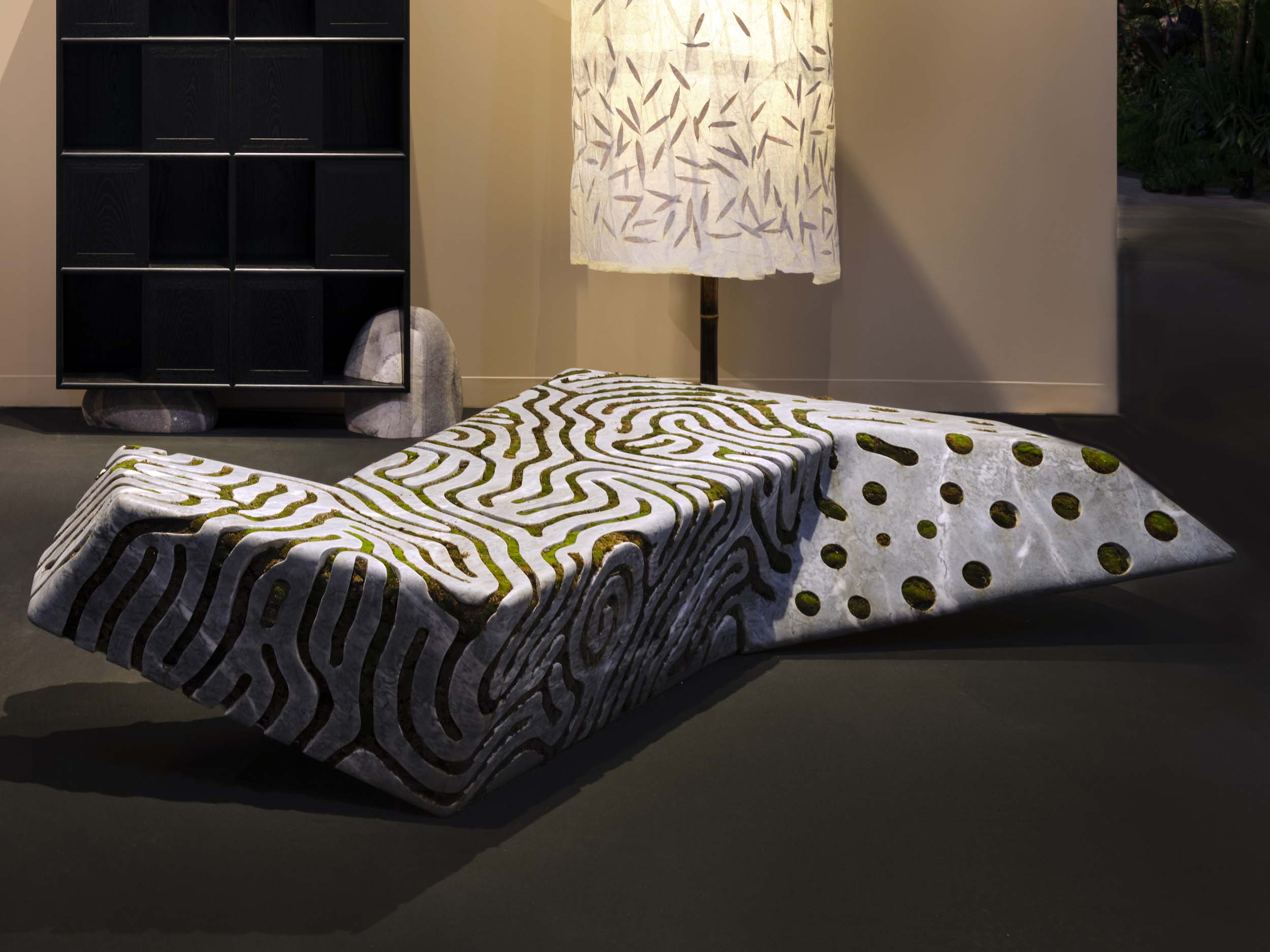
Symbio Bench by Joris Laarman at Friedman Benda
In a booth exploring artistic engagements with nature, Joris Laarman’s sculptural Symbio bench was one of the most literal and the most poetic. The Dutch designer cut Turing patterns, like those founds on the coats of spotted leopards or the shells of sea creatures, into a block of Grigio Carpazi marble, creating a seat. He then filled the voids with a substrate to encourage plant growth, and grow they did: Moss and lichen delicately poke out from the canyons and holes in the seat’s surface, which was hand-watered throughout the fair by Miami Beach Botanical Garden volunteers.
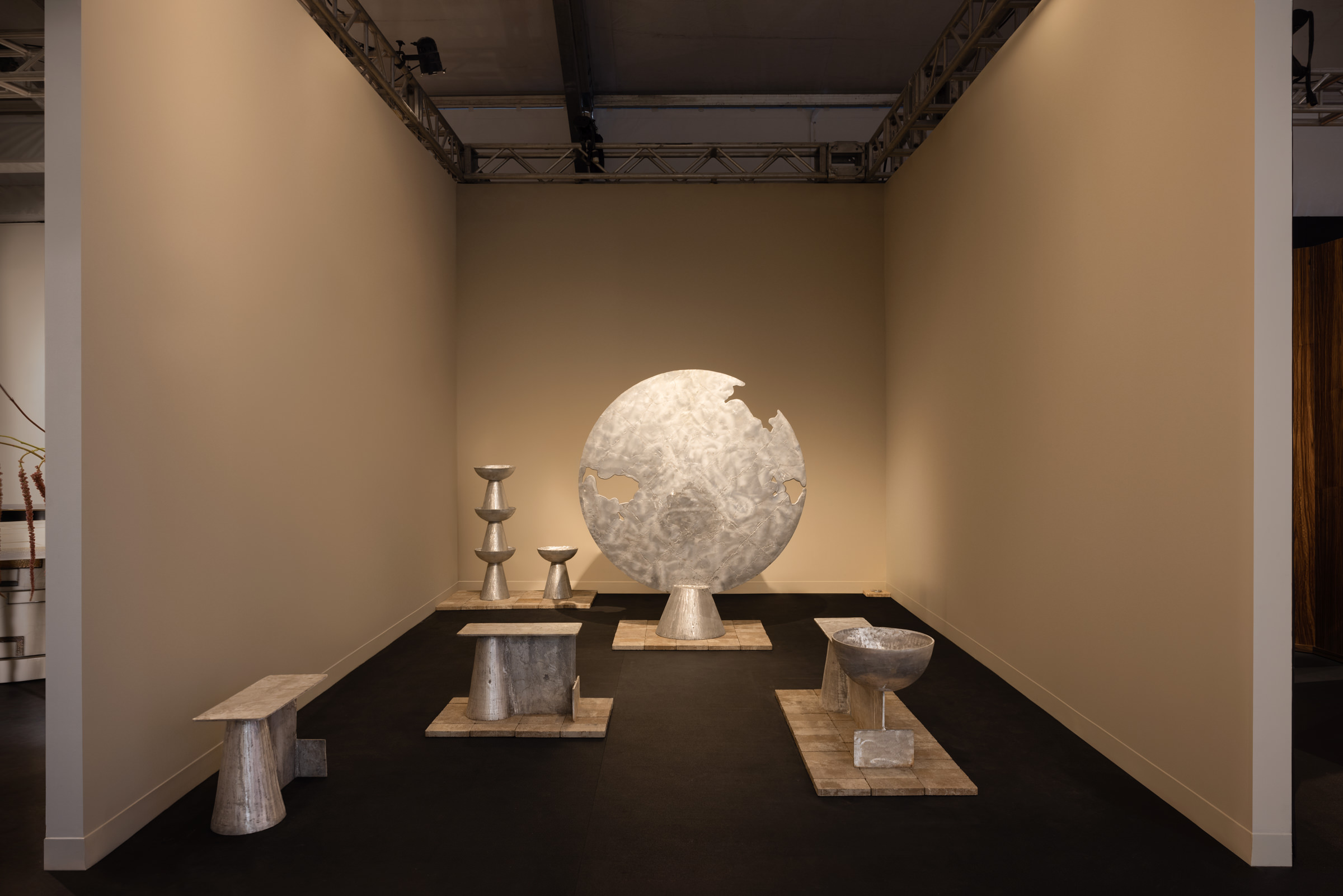
Tales by Moonlight by Nifemi Marcus-Bello at Marta
When Lagos-based designer Nifemi Marcus-Bello needed replacement parts for his secondhand Jeep Wrangler, he took a trip to a car repair shop and made fast friends—and future collaborators—with the micro-fabricators making car parts from the material. The interaction inspired a new geometric furniture collection with the metal artisans who recycle automotive aluminum. The collaboration speaks not only to this type of local design solution in Nigeria, but also to emergent social practices in the country’s arts and culture more broadly. “It was a knowledge exchange blending their knowledge of sandcasting and my knowledge of design,” said Marcus-Bello. “This is the first time that they’ve done something at this scale. The best designs are built out of constraints in material resources.”
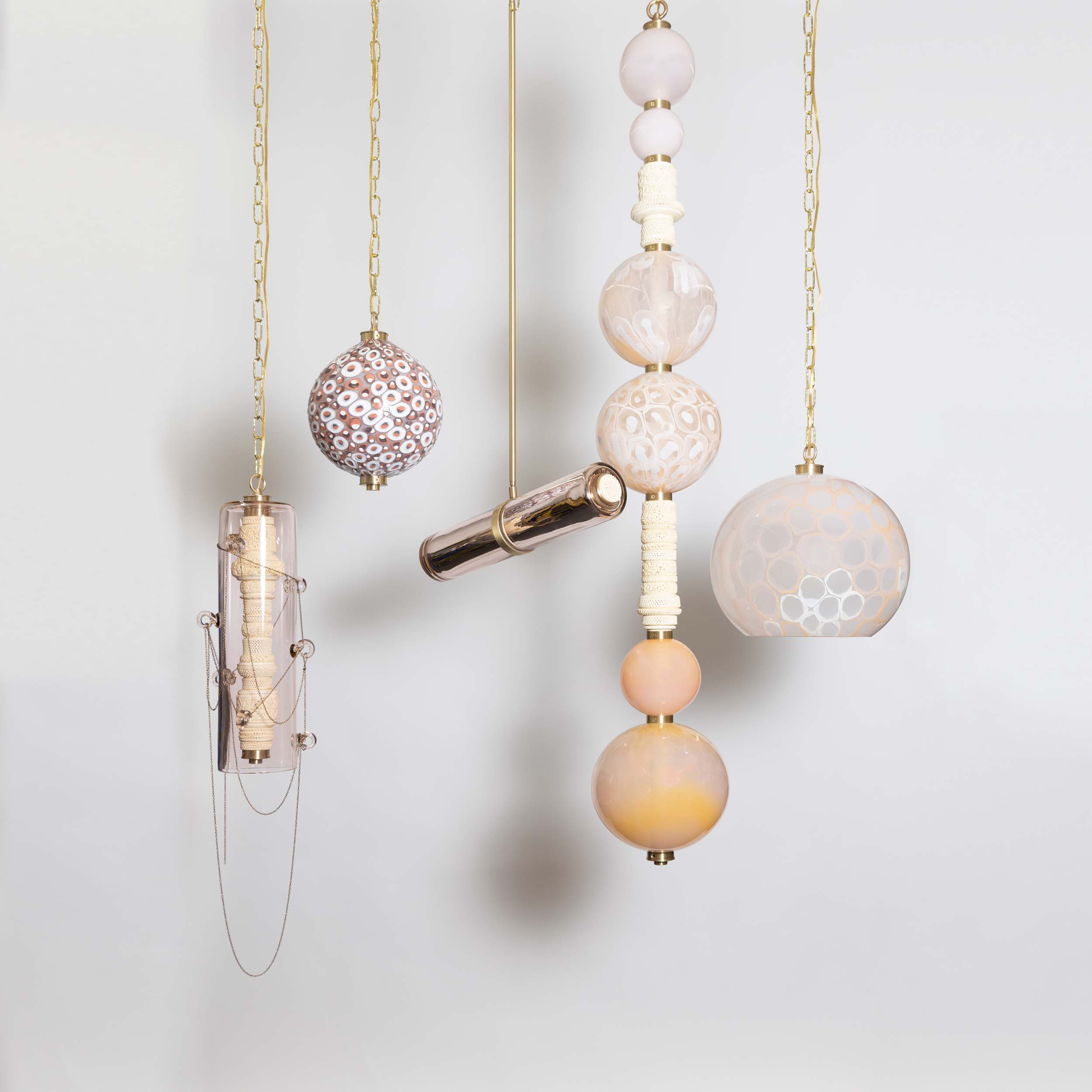
Glowing Sentiments 1 by Feyza Koksal Kemahlioglu at Wexler Gallery
New York–based, Turkish-born lighting designer Feyza Koksal Kemahlioglu celebrates heritage in her work. She sources traditional materials and artisan craft—like meerschaum clay carving and gold wire threading—to keep these techniques alive in modern-day Turkey and uses them in combination with her contemporary glassblowing, practiced in hot shops in Brooklyn and Queens. A chandelier titled Glowing Sentiments 1 is a fantastic display of Kemahlioglu’s material exploration of the murrine glassmaking technique—a meticulous ancestral method that combines small section-cut rods of glass into repeated patterns. Delicately connected by chains, each of the chandelier’s pendants reflects a distinctive piece of the designer’s research-based practice.

Wabi Sabi Bed by Ethan Stebbins at Ateliers Courbet
If increasing awareness about our effect on the natural world means returning to a design aesthetic closer to nature, Maine-based stonemason and woodworker Ethan Stebbins’ practice is leading the way. Made of American ash, pine, and hand-carved northern coast stones, his Wabi Sabi Bed takes a truly light touch, expertly leaving its rock posts as unworked focal points of the design. Using the traditional Japanese technique of interlocking wood joints and no nails, Stebbins embraces the unexpected combination of his materials, allowing the lucky owner of this unique piece to dream in biophilia.
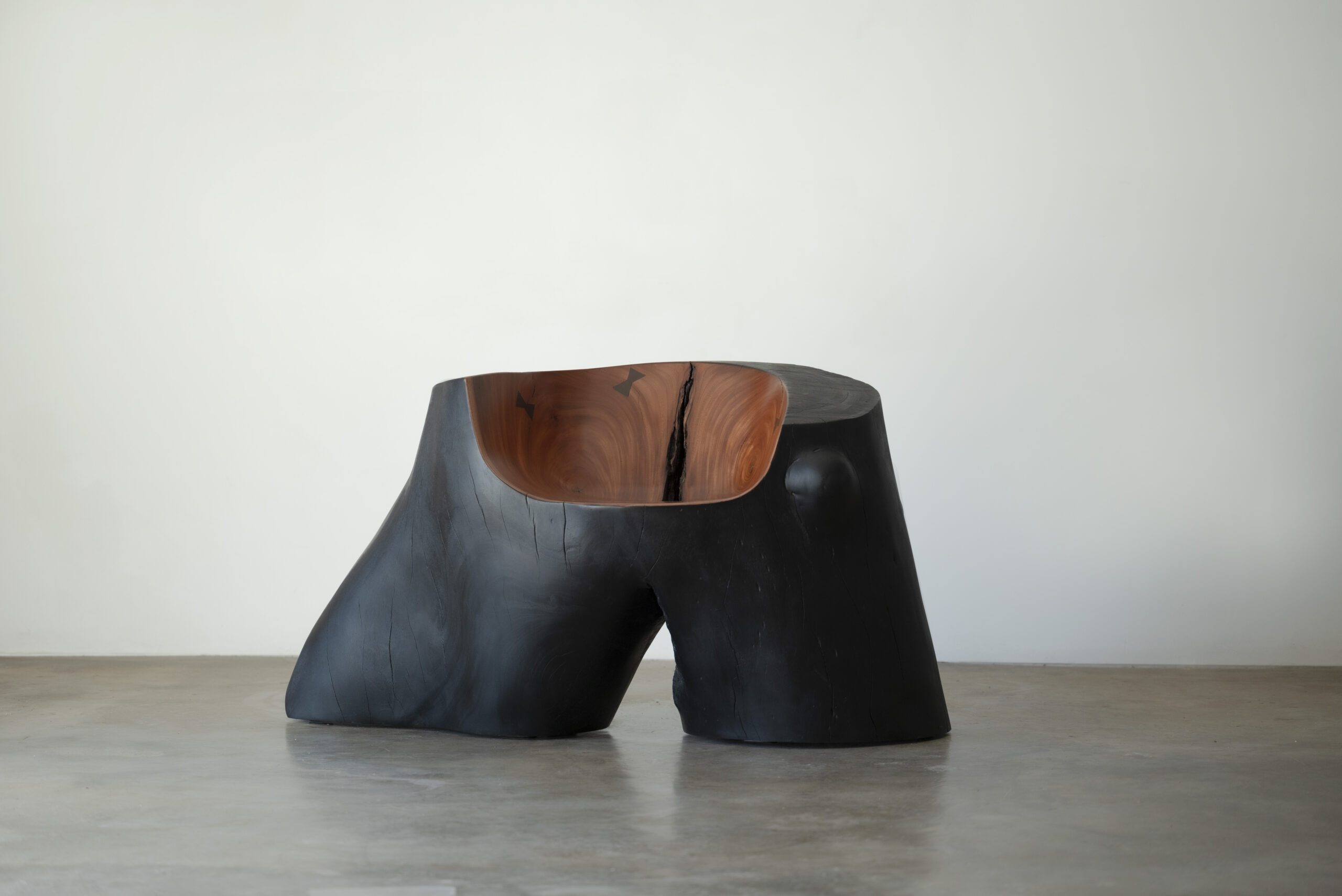
En Tus Brazos by Reynold Rodriguez at Charles Burnand Gallery
Puerto Rican artist Reynold Rodriguez is accustomed to working with the island’s local resources. His newest series of wood seating is the result of a natural disaster: 2017’s Hurricane Maria, which devastated the island—including Rodriguez’s own studio. After moving into a new space, he began collecting large chunks of storm-felled wood and carving them into works that are functional but still visibly made of their natural material. In this shou sugi ban seat made from fallen mahogany, knots, splits, and bark patterns can still be seen on its surface.
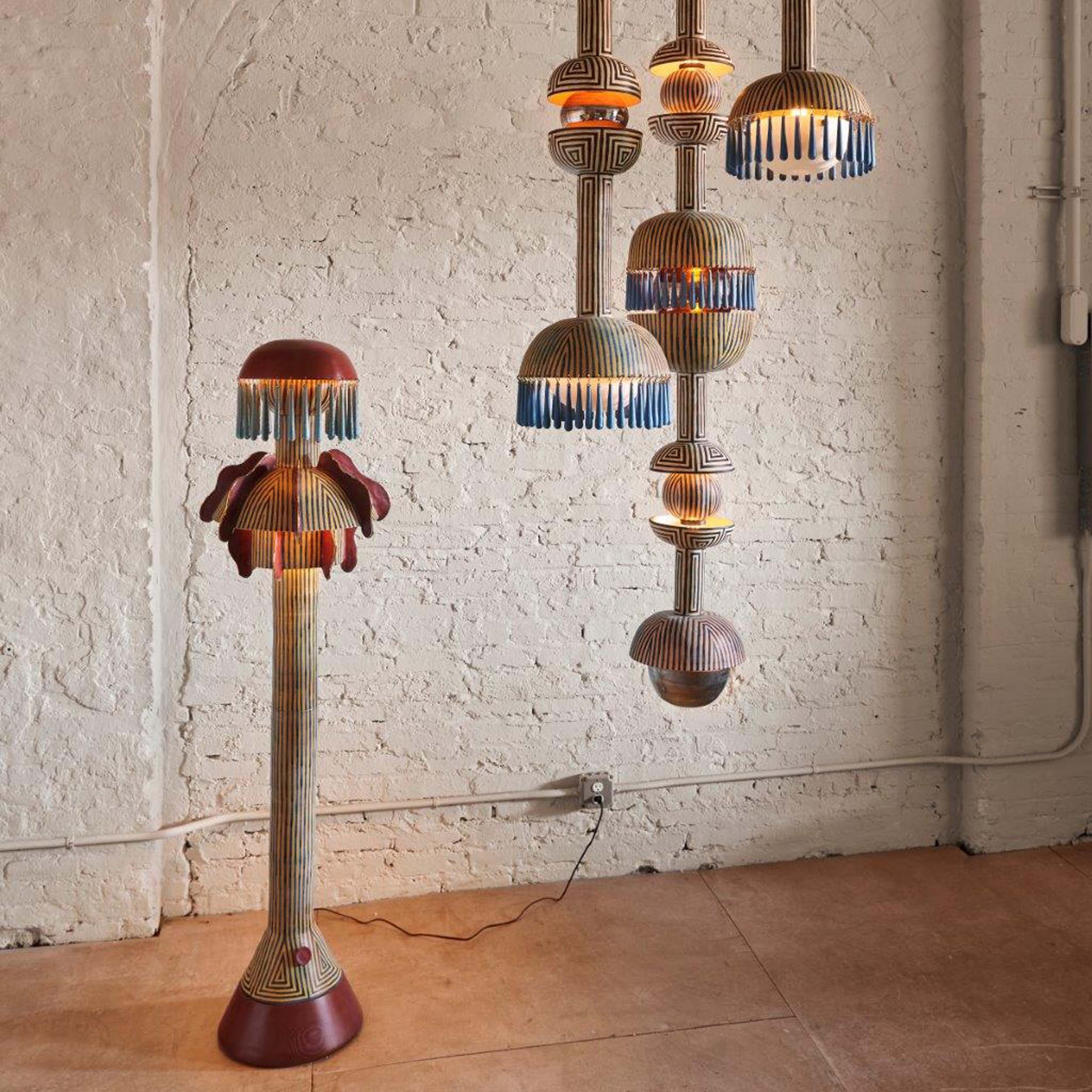
Sky floor lamp by Jeremy Anderson at Gallery FUMI
When New York artist Jeremy Anderson first established his ceramics practice in 2020, the works were table-sized creatures covered in his now-signature geometric patterning. Now, with the Design Miami launch of his first lighting collection, they are life size. This anthropomorphic series of glazed stoneware floor lamps and pendants pack a playful punch. Sky is dressed in a frilly collar and terra-cotta-colored chapeau, further adorned with hanging jewelry. The look reflects Anderson’s process, which he describes as “a conduit to tap into childlike play.”
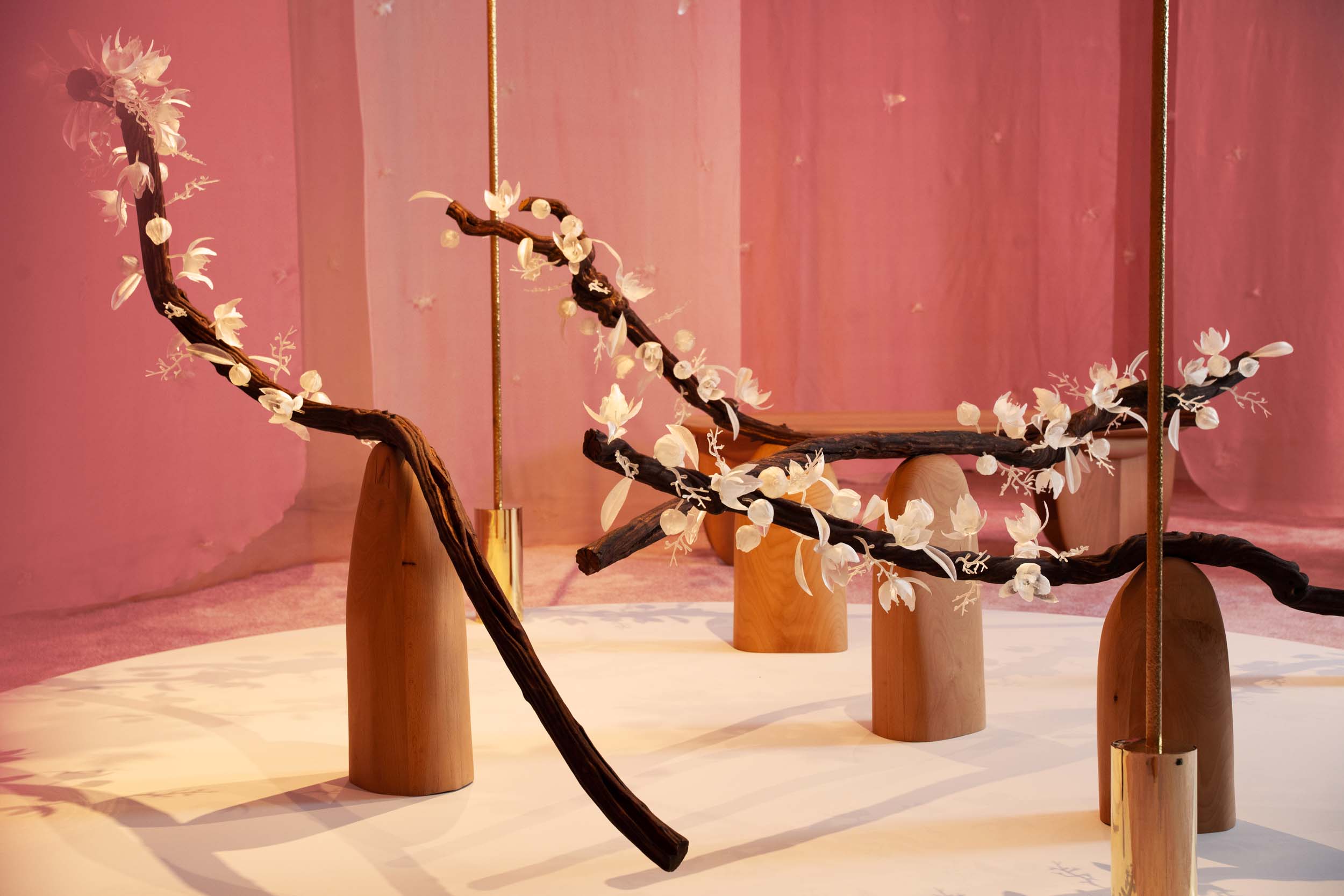
The Pollination Dance by Fernando Laposse for Maison Perrier-Jouët
Whenever one needed a quick mental break from the visual overload that is Design Miami, Mexican artist and designer Fernando Laposse’s The Pollination Dance served as a welcome retreat. Swathed in a series of naturally dyed silk panels, the installation is made of 3D-printed bio-resin spouts and flowers, the latter seemingly growing from lianas vines that the artist gathered in the central Mexican jungle. Frequently, dancers pour marigold-colored sand through these spouts in a meditation on the cycle of pollination and the humble, natural materials around which Laposse bases his sensitive practice.
